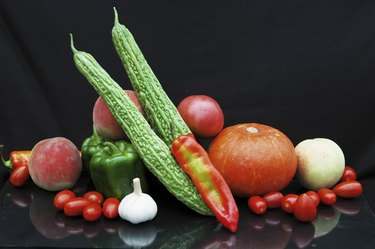
Ascites is most often seen in people with liver disease. This uncomfortable condition results from the accumulation of fluid in the peritoneal cavity, which is the space in your abdomen between your abdominal organs. A low-sodium diet is recommended for people with ascites. Consult your doctor about your dietary needs before making changes to your intake.
How Much Sodium
Video of the Day
Ascites causes your body to retain sodium, which in turn leads to fluid retention. Limiting your daily intake of sodium may help prevent your body from accumulating more fluid around your midsection. Depending on the degree of your ascites, you may need to limit your daily sodium intake from 1,500 to 2,000 milligrams a day. For perspective, 1 teaspoon of salt contains 2,400 milligrams of sodium.
Video of the Day
Foods Too High in Sodium
While added salt is a source of sodium in the diet, most of the sodium you eat comes from processed food. In addition to not adding salt to your food, you should also avoid canned foods, frozen meals, snack foods, baked goods and seasoned side dishes to limit sodium intake. Deli meats and cheese are also high in sodium, as well as bacon and sausage. In addition, you want to avoid high-sodium condiments such as ketchup, salad dressing, soy sauce, barbecue sauce and any seasoning with salt in its name, such as celery or garlic salt. Pickles and olives are also high in sodium. Use food labels to help you track sodium in food. Foods with less than 140 milligrams of sodium per serving are considered low-sodium foods.
Low-Sodium Foods
You can limit your intake of sodium by eating fresh foods that you prepare yourself. Fruits, vegetables and fresh meats such as lean red meat, poultry and seafood are naturally low in sodium. Plain rice, pasta and other grains such as millet and quinoa are also naturally low in sodium. Some breads and cereals are a source of sodium. Read food labels to find the lowest sodium options. Use lemon juice, vinegar, garlic, onion and herbs and spices to add flavor to food.
About Fluid Restriction
Not everyone with ascites needs to restrict fluid amounts, according to the Cleveland Clinic. But in some cases it might be necessary. Your doctor determines the amount of fluid that is safe for you to drink. In addition to beverages -- such as water and juice -- ice cream, gelatin, yogurt, soup, sauces and watery fruits such as watermelon are also considered fluids and may need to be restricted.